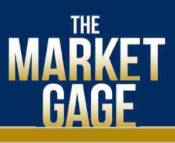
We start the week on a quiet note as the market looks for some kind of direction. A steady dollar valuation is keeping gold and silver in a tight trading range.
Overnight, the Gold ETF set a new high in gold holdings for 2016. A few financial advisors I spoke with this morning indicated that there is still a strong interest in diversifying portfolios to include gold and silver ETFs.
A story I must share this morning is that over the weekend the Chinese Yuan was added to the IMF reserve basket becoming the first currency to be added since the Euro in 1999.
This move means the Chinese yuan will now be one of the International Monetary Fund’s lending currencies in times of emergency economic bailouts. China has been putting pressure on the IMF for a while now and on October 1st they finally got their way to be recognized as a legitimate world currency.
The U.S dollar still holds the top spot at 41.73 percent of the value of the SRD basket followed by the Euro at 30.93 percent, the Chinese yuan, also known as renminbi, at 10.92 percent, the Japanese yen at 8.33 percent and, last but not least, the pound sterling at 8.09 percent.
Nonetheless, this is a big victory for China to be recognized as a force in the global financial system. In coming to this decision by the IMF to add China, was for the most part, based on China’s expanding role in global trade. This in turn will dramatically increase the use of the renminbi in foreign exchange transactions.
For those who are not familiar with the term SRD or Special Drawing Rights, let me share some history with you. Special Drawing Rights were created in 1969 to support the Bretton Woods system of fixed exchange rates. The SRD was created after it was determined that the international supply of gold and the U.S. dollar were inadequate for supporting the expansion of international trade and finance. Remember in 1971 the U.S. ended its link between Gold and the U.S. dollar.
Now it is my opinion that this step is for China to push forward in trying to become the premier world currency and reducing the dominance of the West in the global financial system. One way China could reach its goal is to significantly increase its gold reserves. Many experts who study the gold market say that China’s official gold reserves are significantly understated. When they do decide to announce their true holdings, it is likely to be in the thousands of tons. China’s image on the global stage will only increase. China is considered one of the only major economies in the world that is pro gold. The yuan being added as a world reserve currency could have an impact on how gold is viewed.
So I must admit that this topic is very complex and even the smartest economists have difficulty understanding what can happen to the U.S. Dollar.
So, after reading so many articles on this topic, it seems to me that there is a possibility that in the coming years, the dollar will lose its status as the world’s reserve currency. China has been accumulating their gold holdings for years and I don’t think anyone really knows how much they are holding. One has to think that the most powerful currency will be the one with the most gold holdings and the smallest debt. The ONLY upside I see is that the dollar still represents the largest percentage of the SDR, but only time will tell if the dollar can maintain its position in the world stage.
I believe in the coming years China will own most of the U.S. assets such as real estate and treasuries, and there is a very good chance that there will be nothing left for us to hang our hats on. So one thing for sure is that physical gold, in any currency, will never lose its shine.
Have a wonderful Monday.
Disclaimer: This editorial has been prepared by Walter Pehowich of Dillon Gage Metals. This document is for information and thought-provoking purposes only and does not purport to predict or forecast actual results. It is not, and should not be regarded as investment advice or as a recommendation regarding any particular security, commodity or course of action. Opinions expressed herein are current opinions as of the date appearing in this editorial only and are subject to change without notice and cannot be attributable to Dillon Gage. Reasonable people may disagree about the opinions expressed herein. In the event any of the assumptions used herein do not come to fruition, results are likely to vary substantially. All investments entail risks. There is no guarantee that investment strategies will achieve the desired results under all market conditions and each investor should evaluate its ability to invest for a long term especially during periods of a market downturn. No part of this editorial may be reproduced in any manner, in whole or in part, without the prior written permission of Dillon Gage Metals. This information is provided with the understanding that with respect to the opinions provided herein, that you will make your own independent decision with respect to any course of action in connection herewith and as to whether such course of action is appropriate or proper based on your own judgment, and that you are capable of understanding and assessing the merits of a course of action. You may not rely on the statements contained herein. Dillon Gage Metals shall not have any liability for any damages of any kind whatsoever relating to this editorial. You should consult your advisors with respect to these areas. By posting this editorial, you acknowledge, understand and accept this disclaimer.
